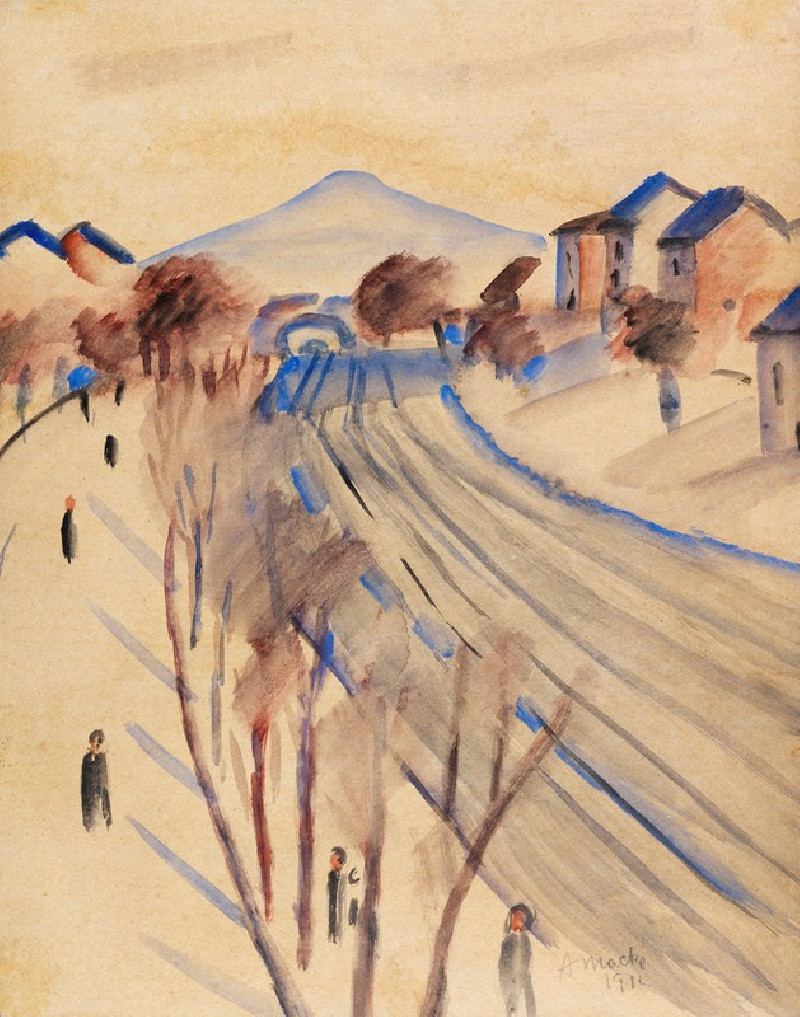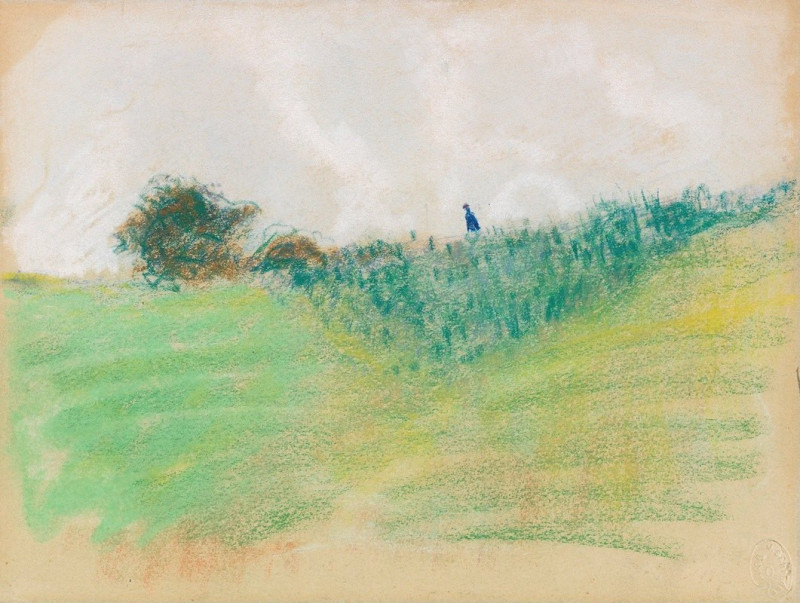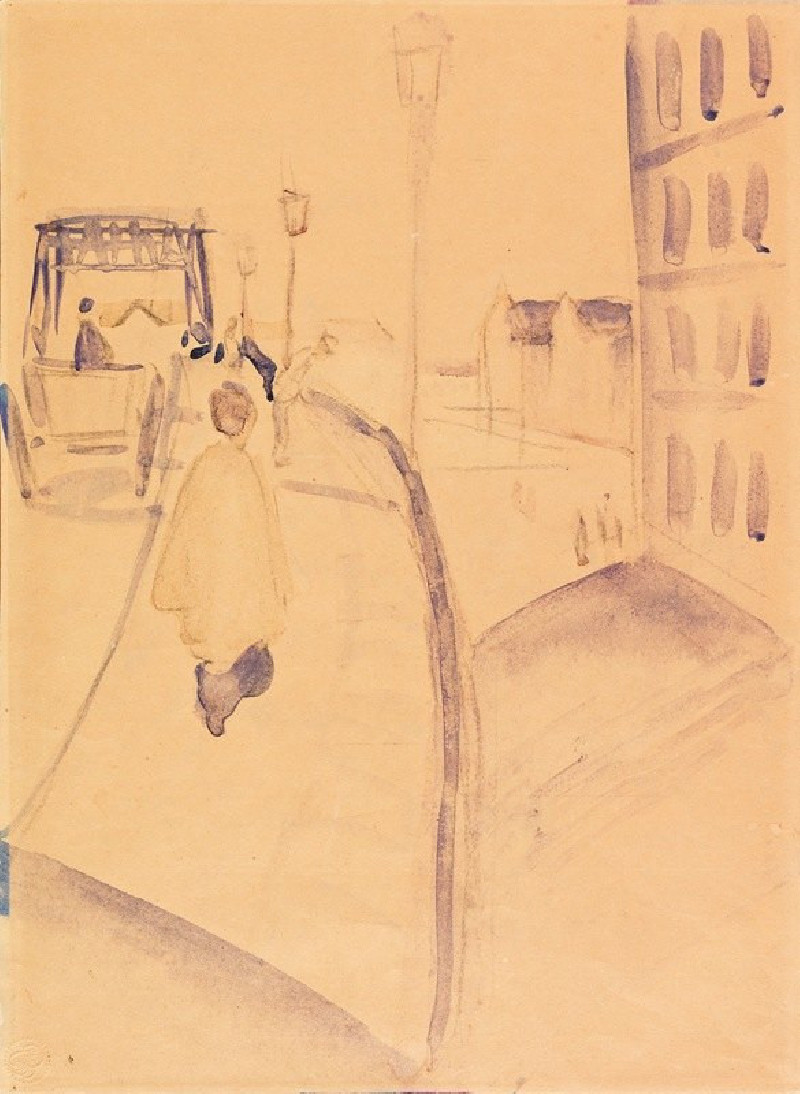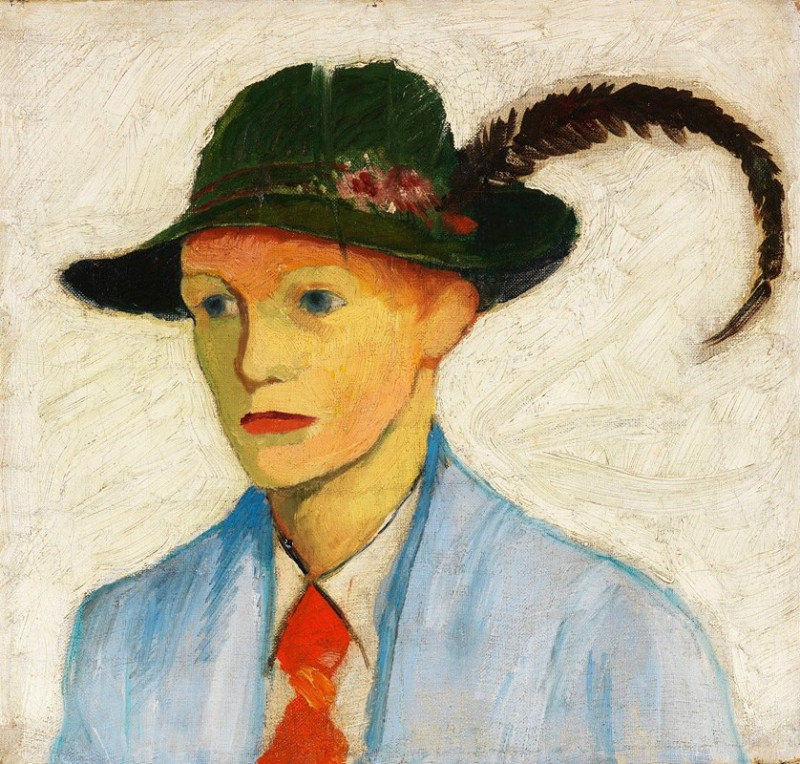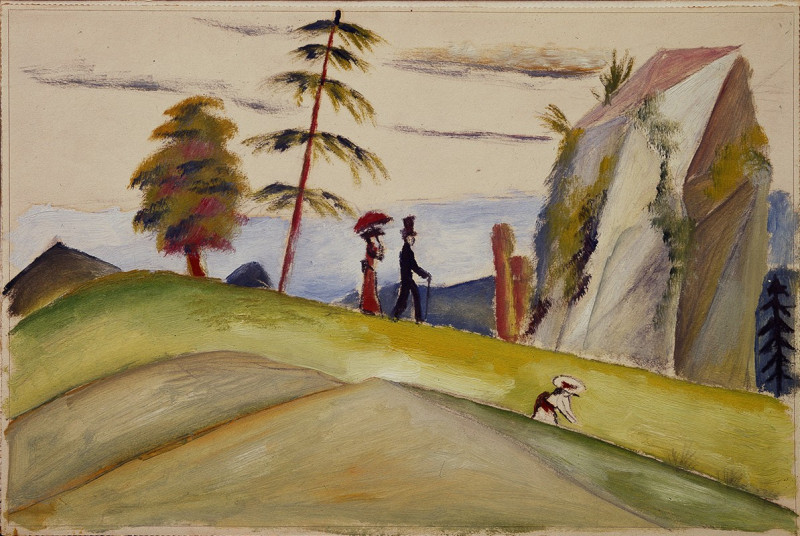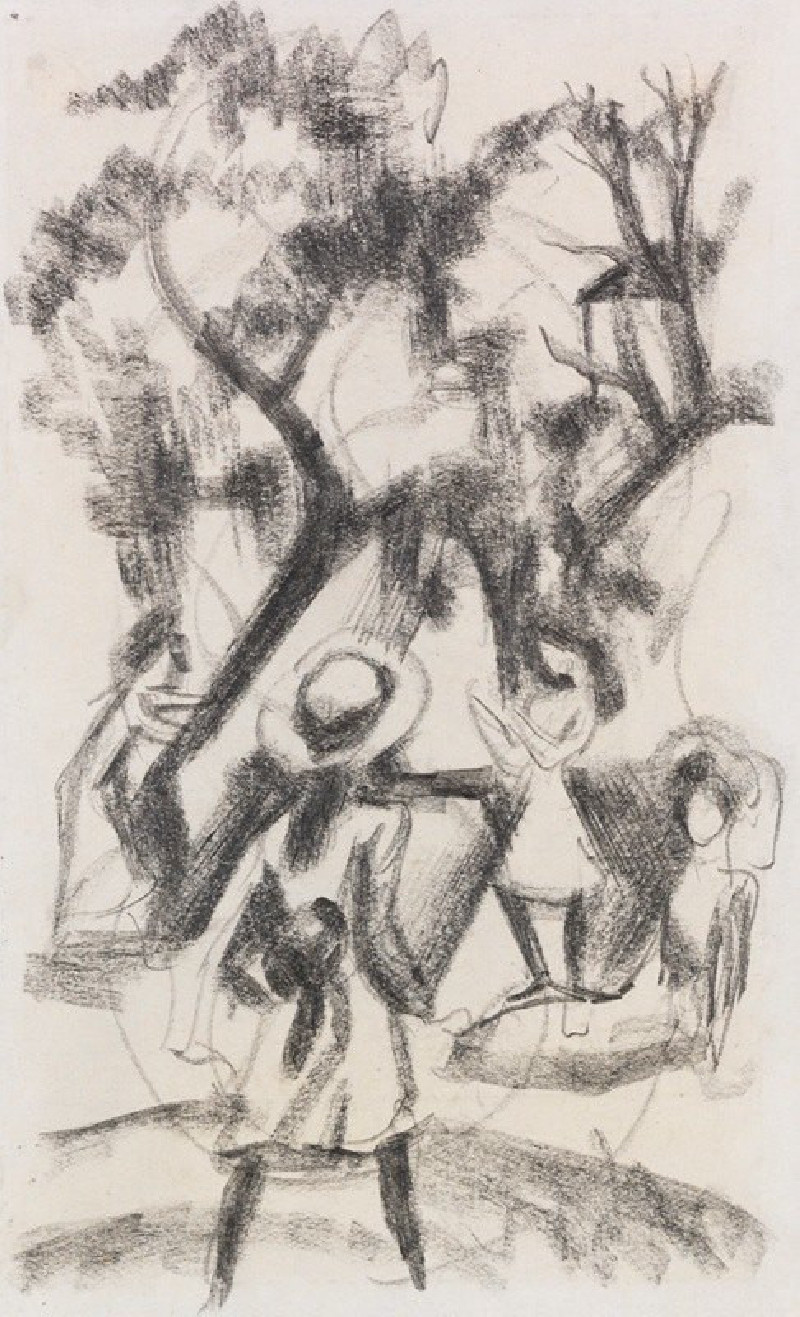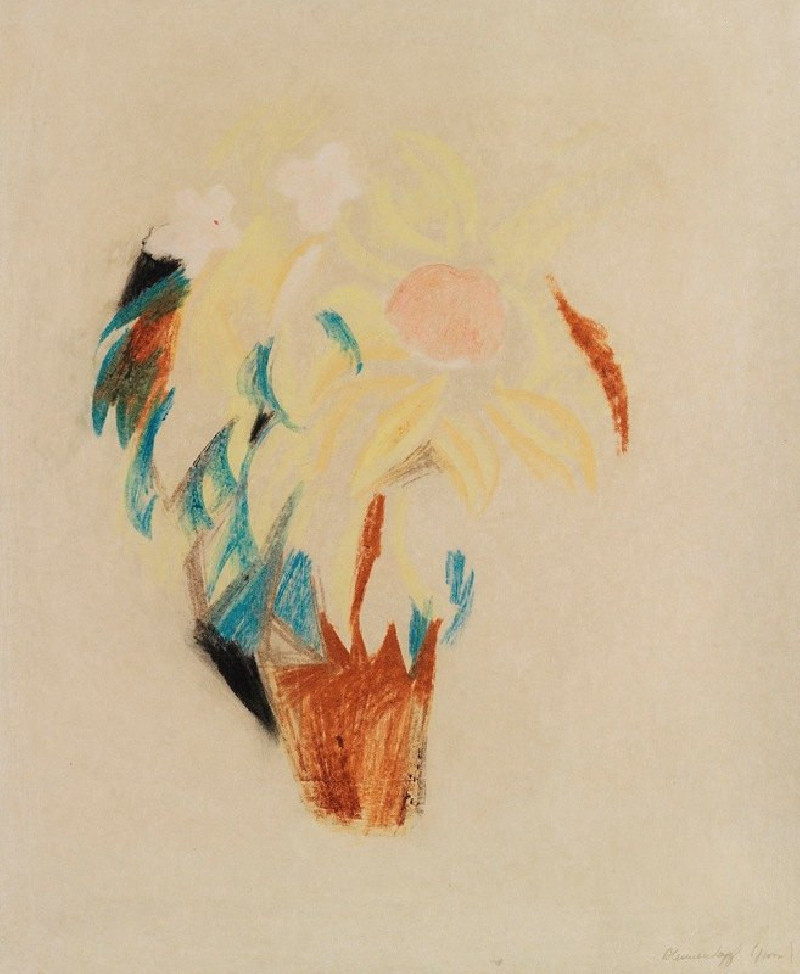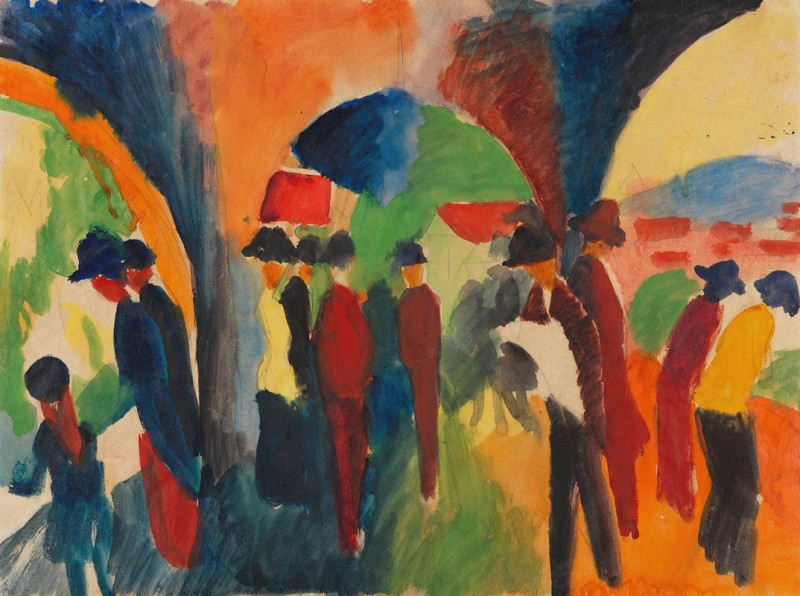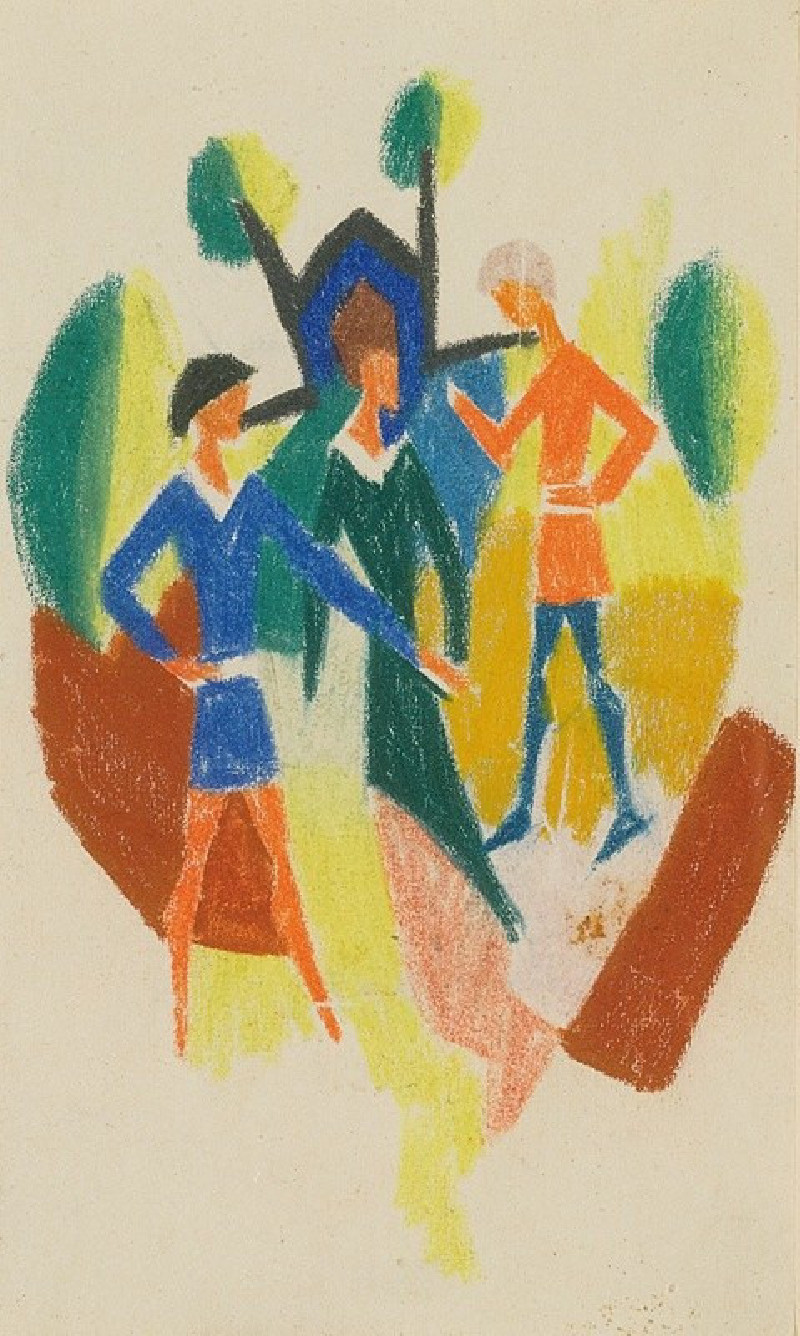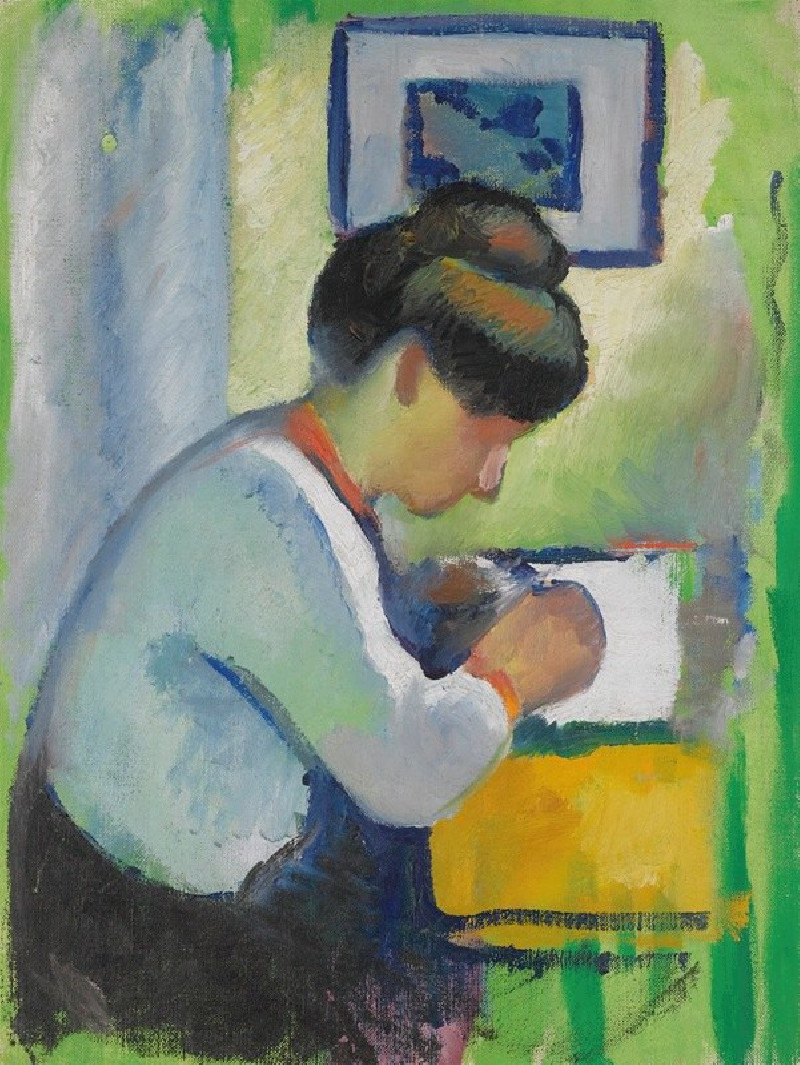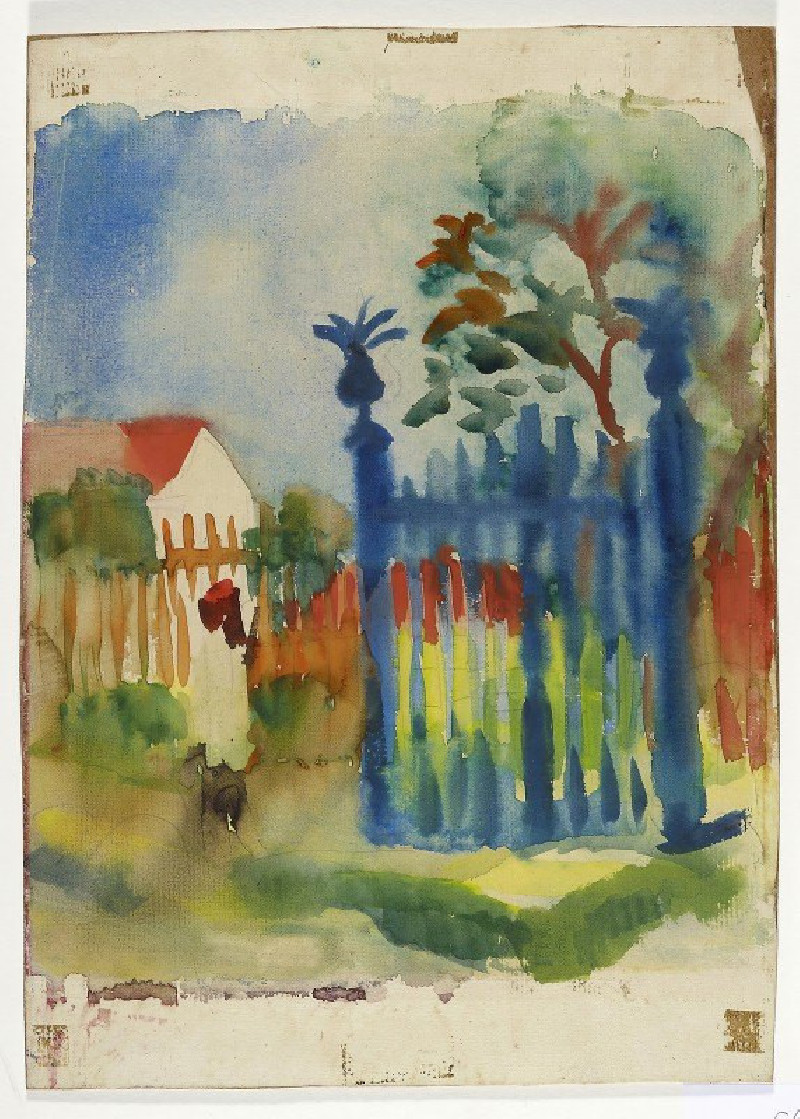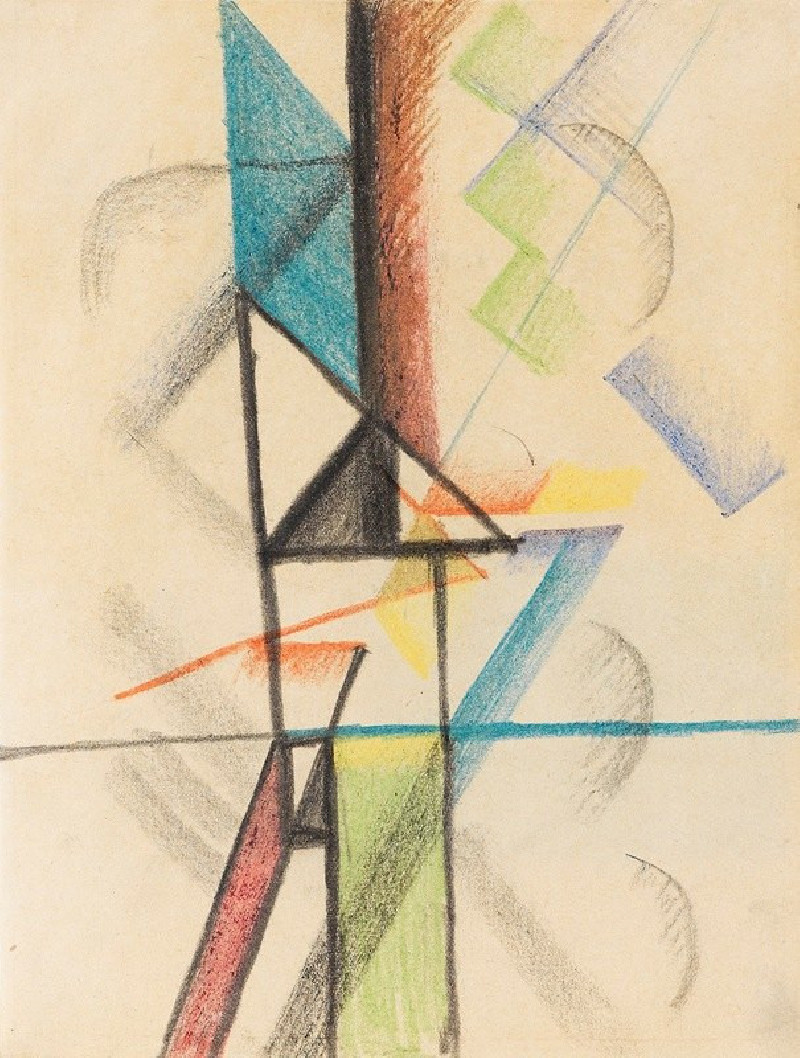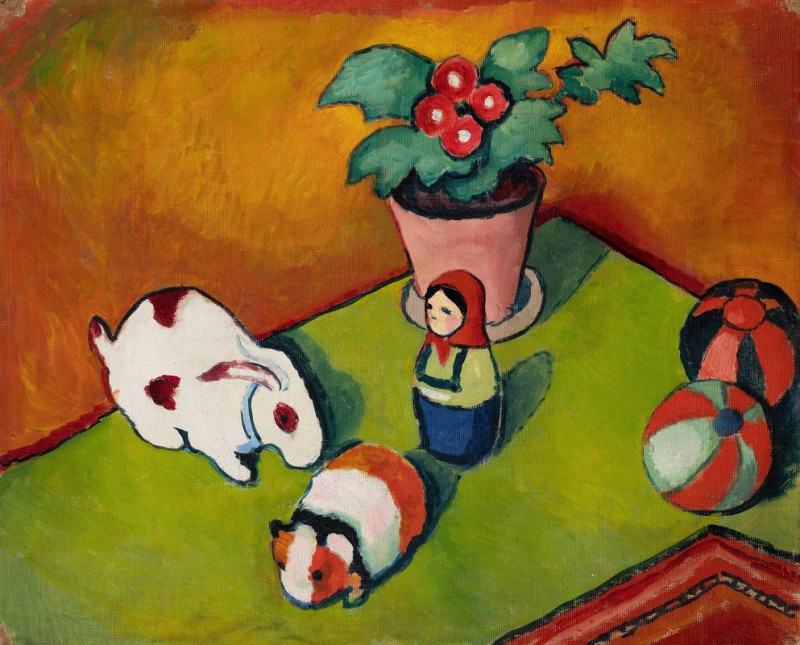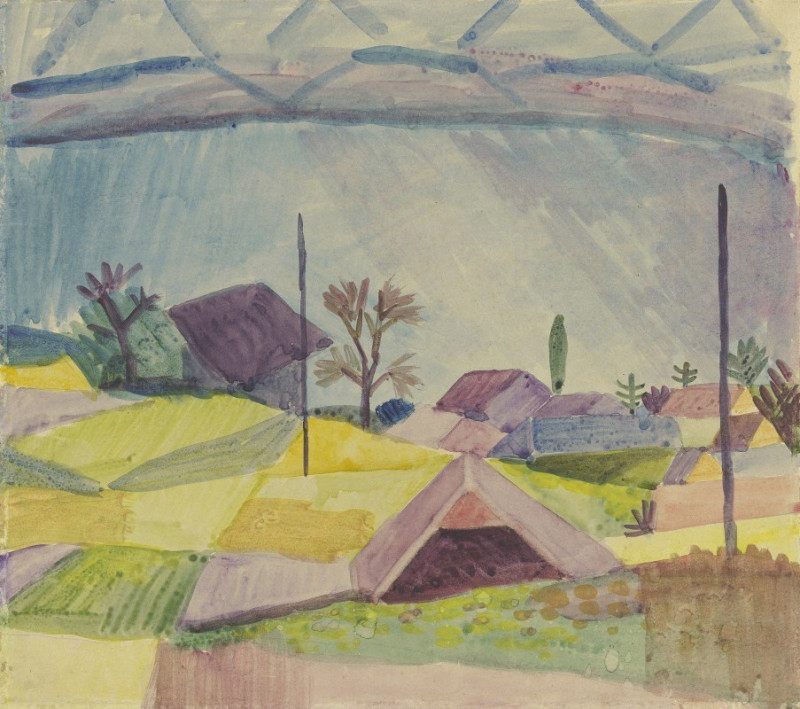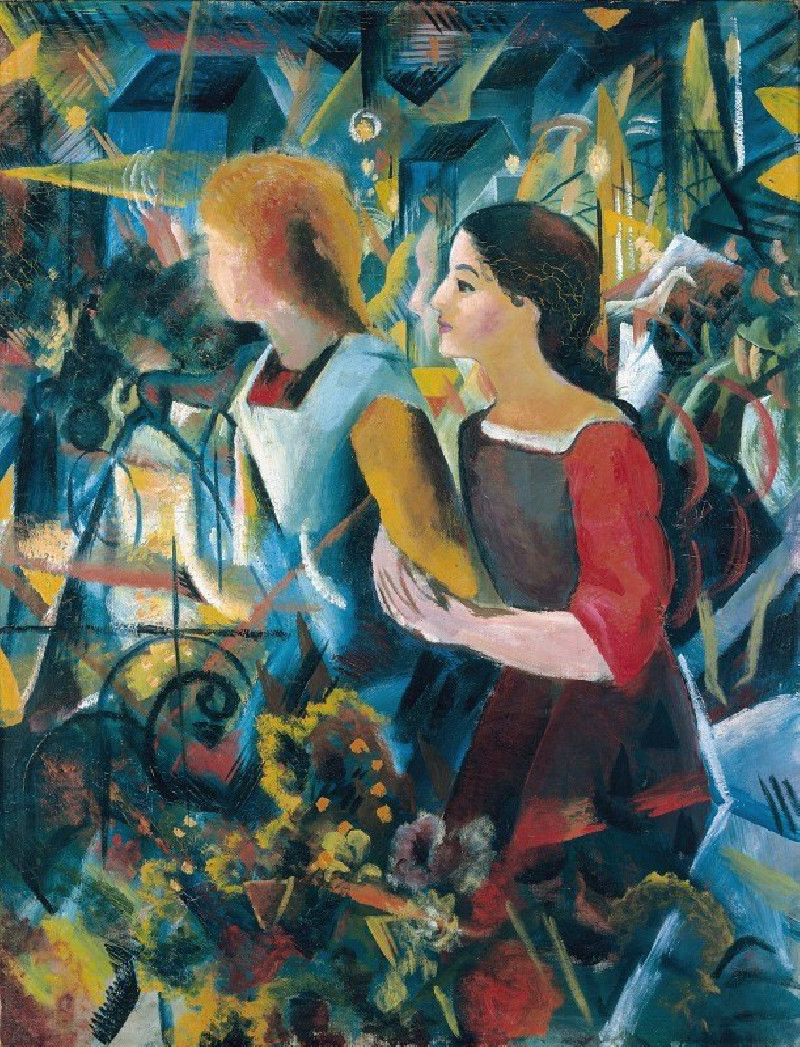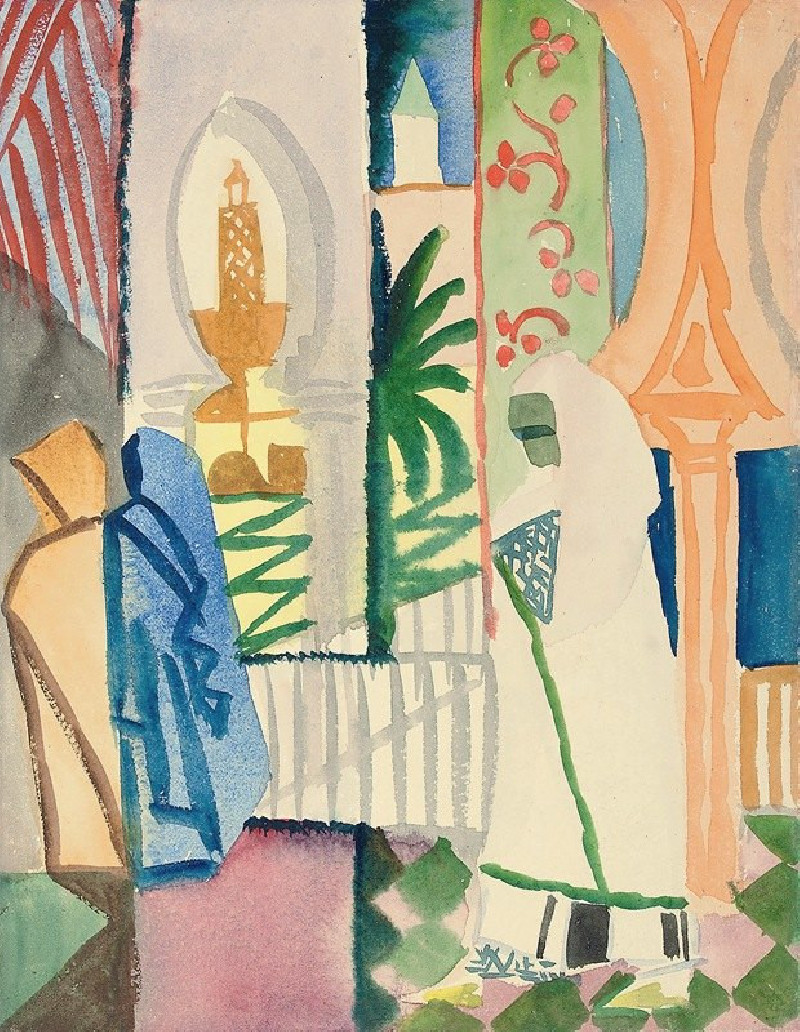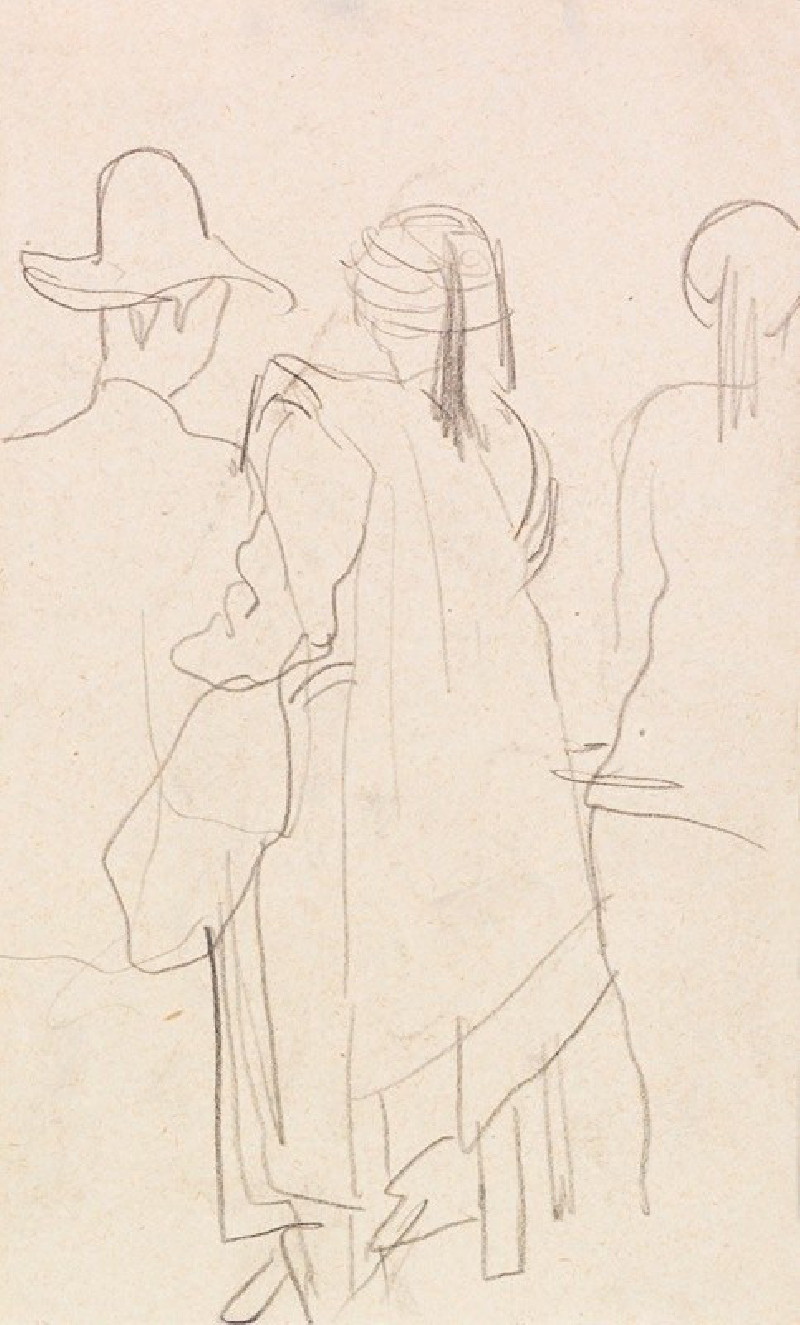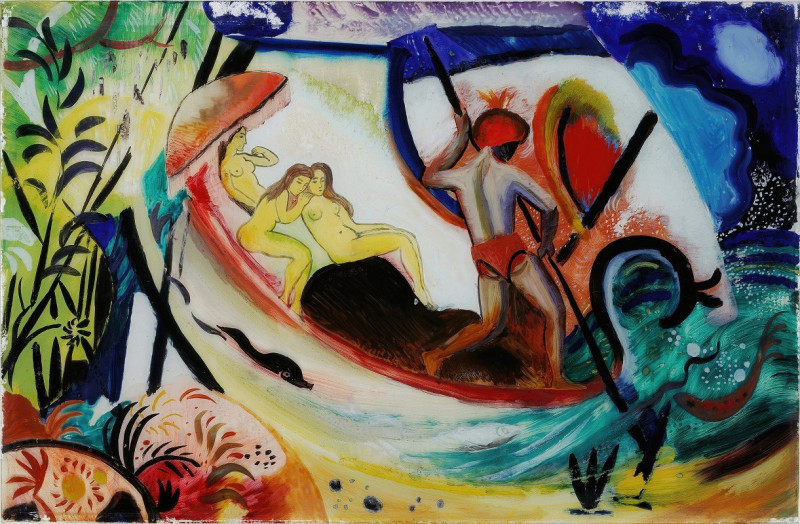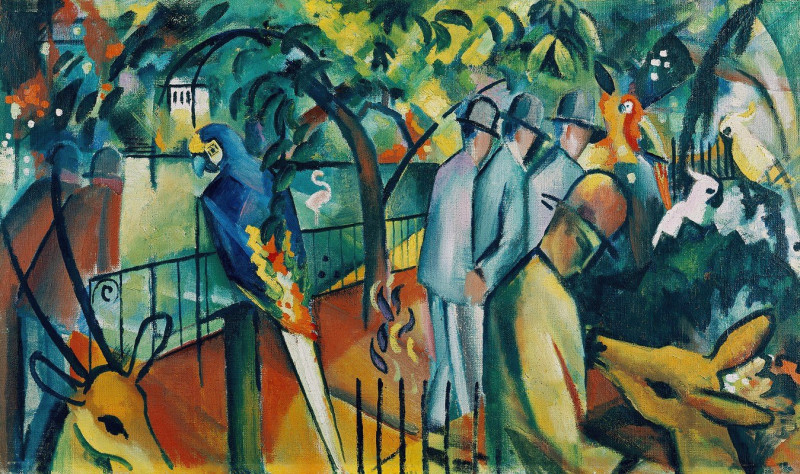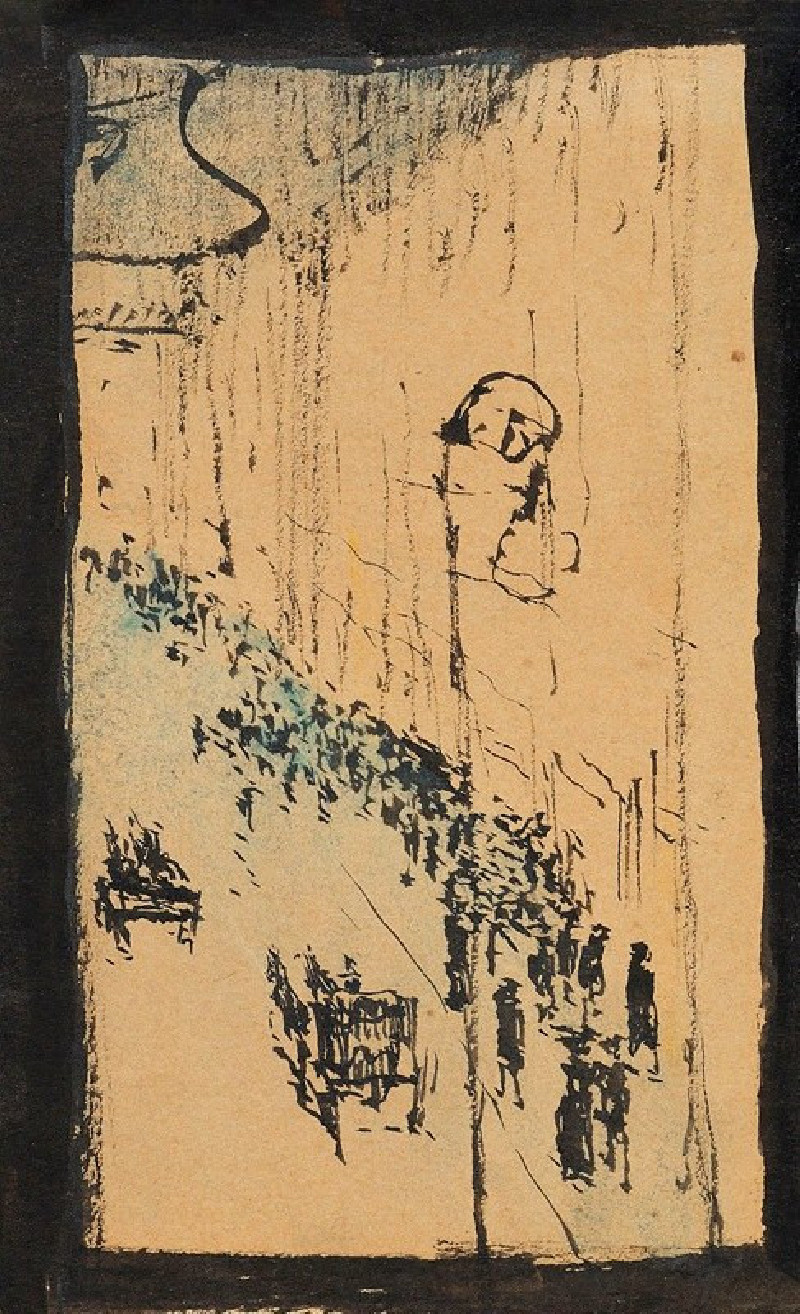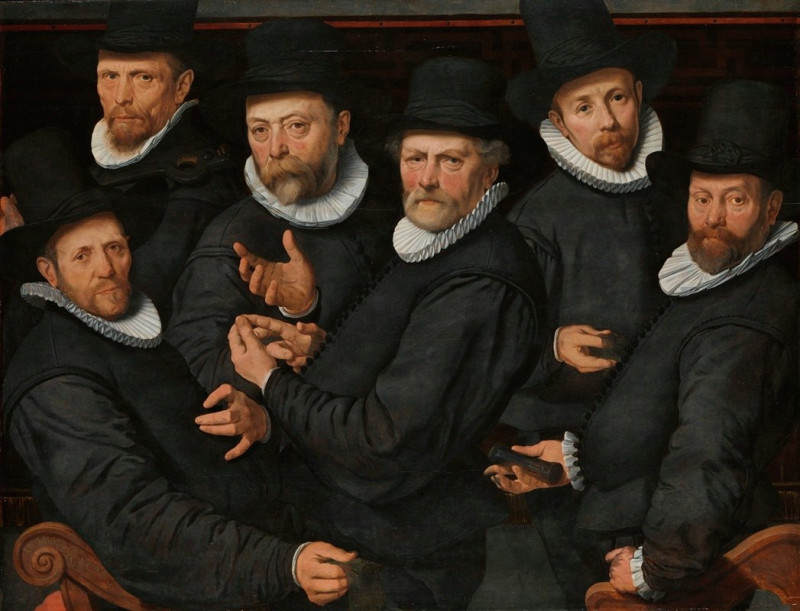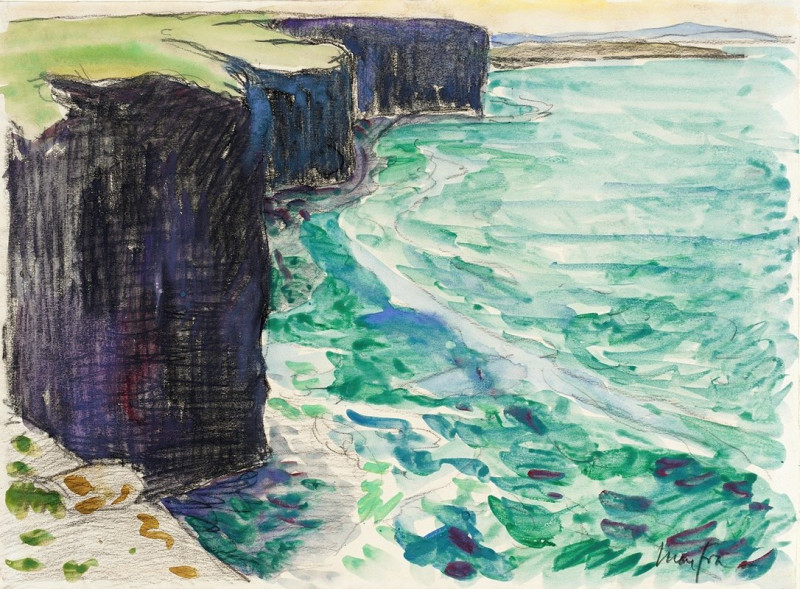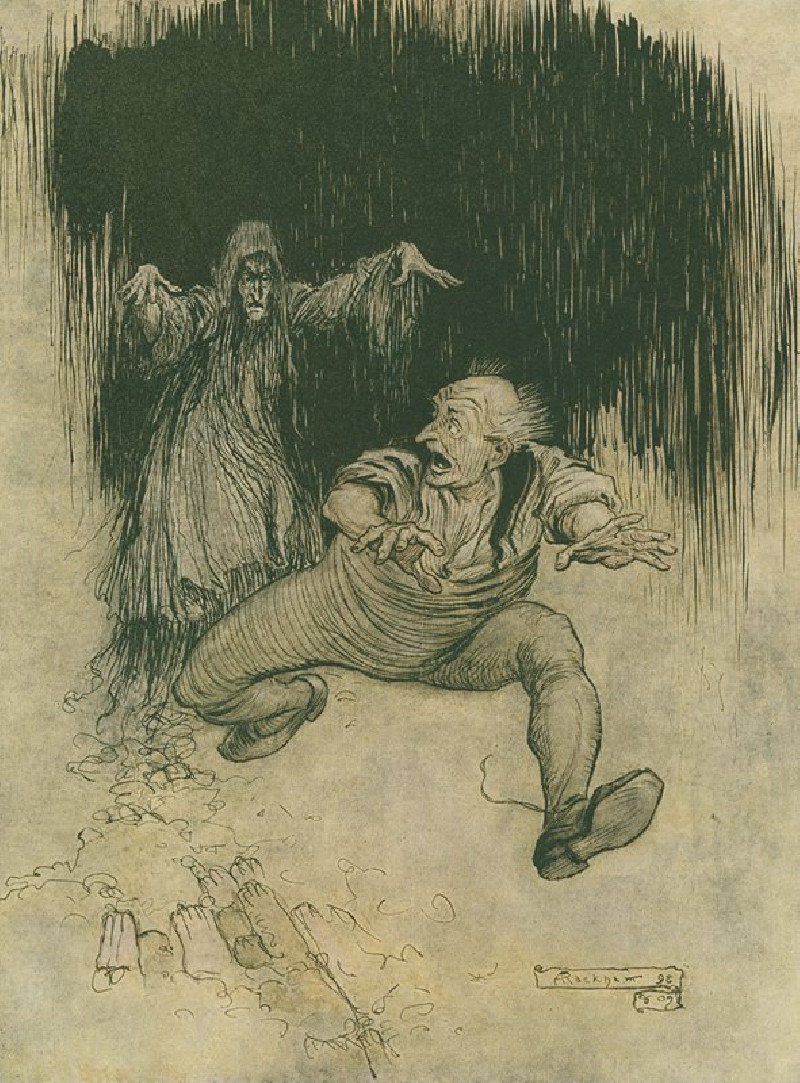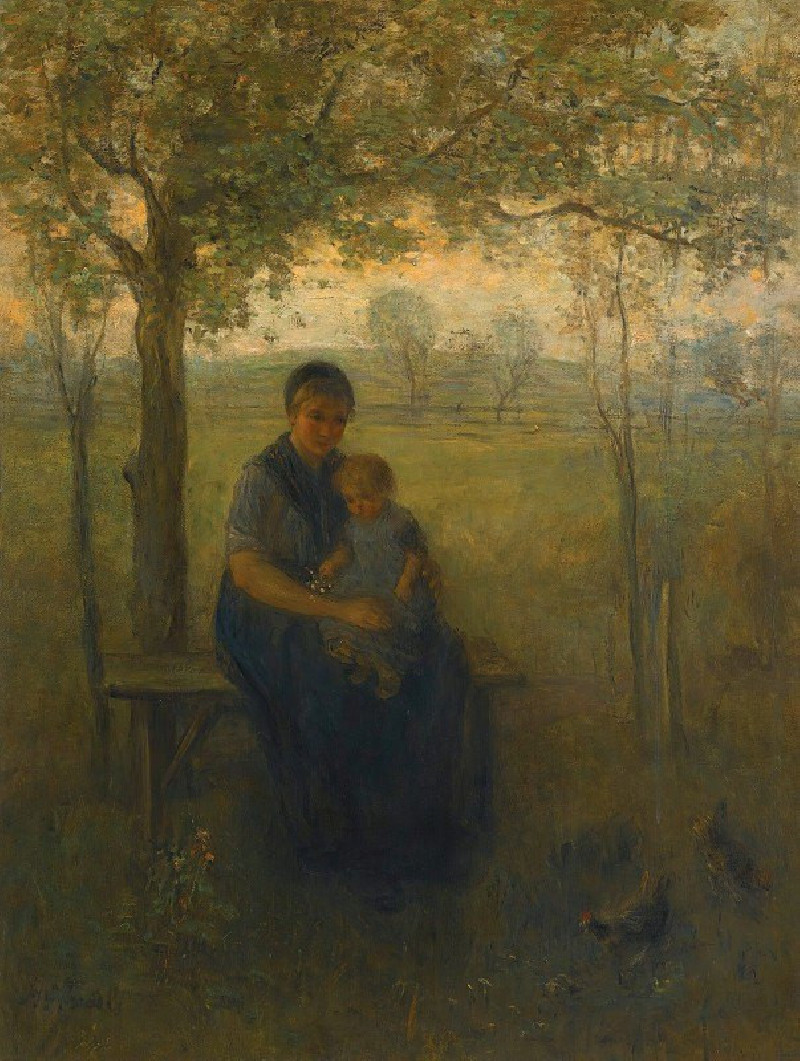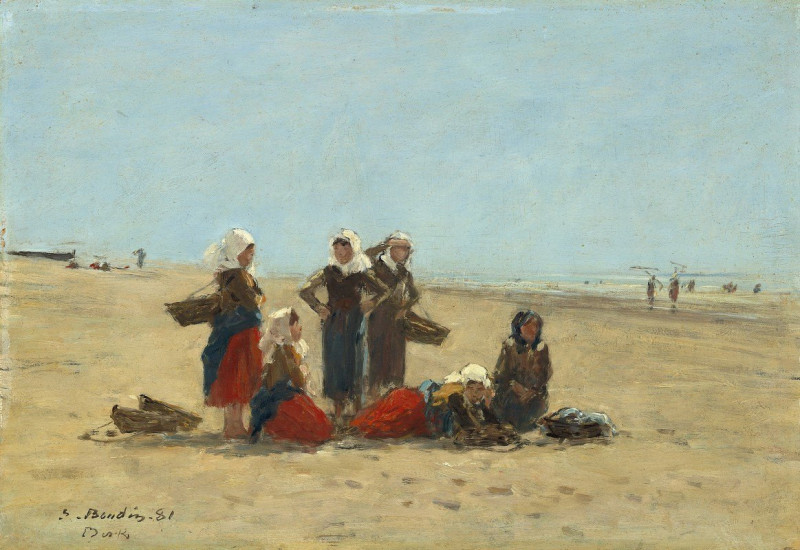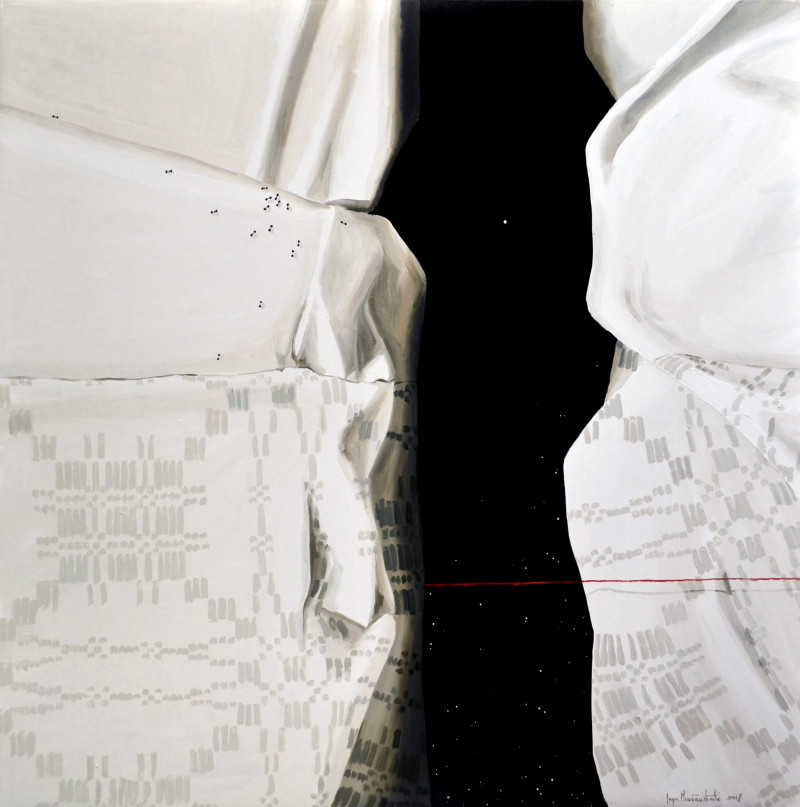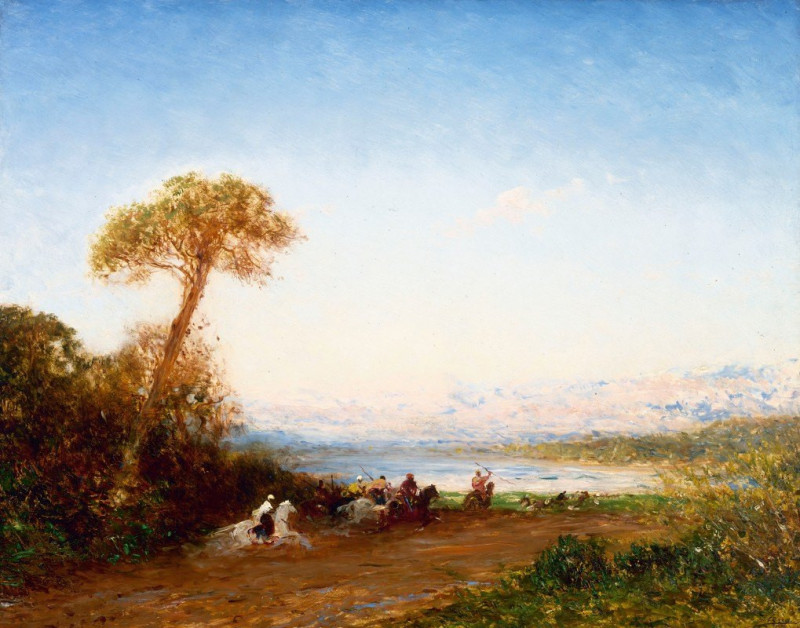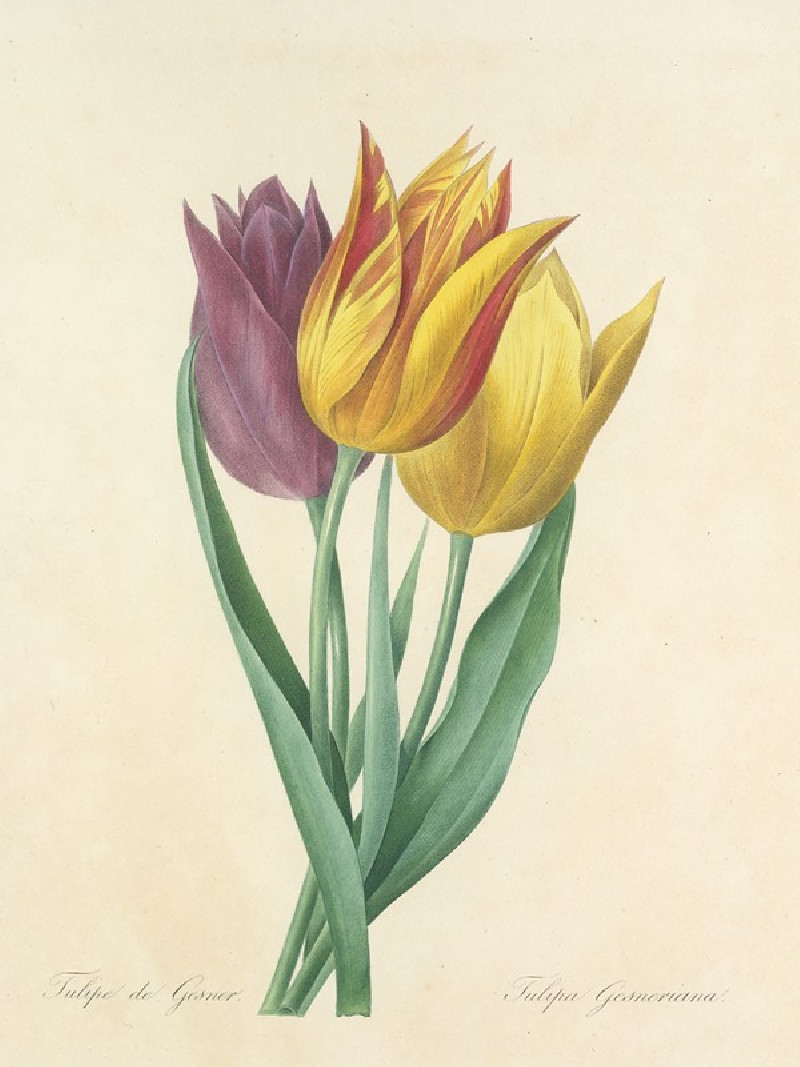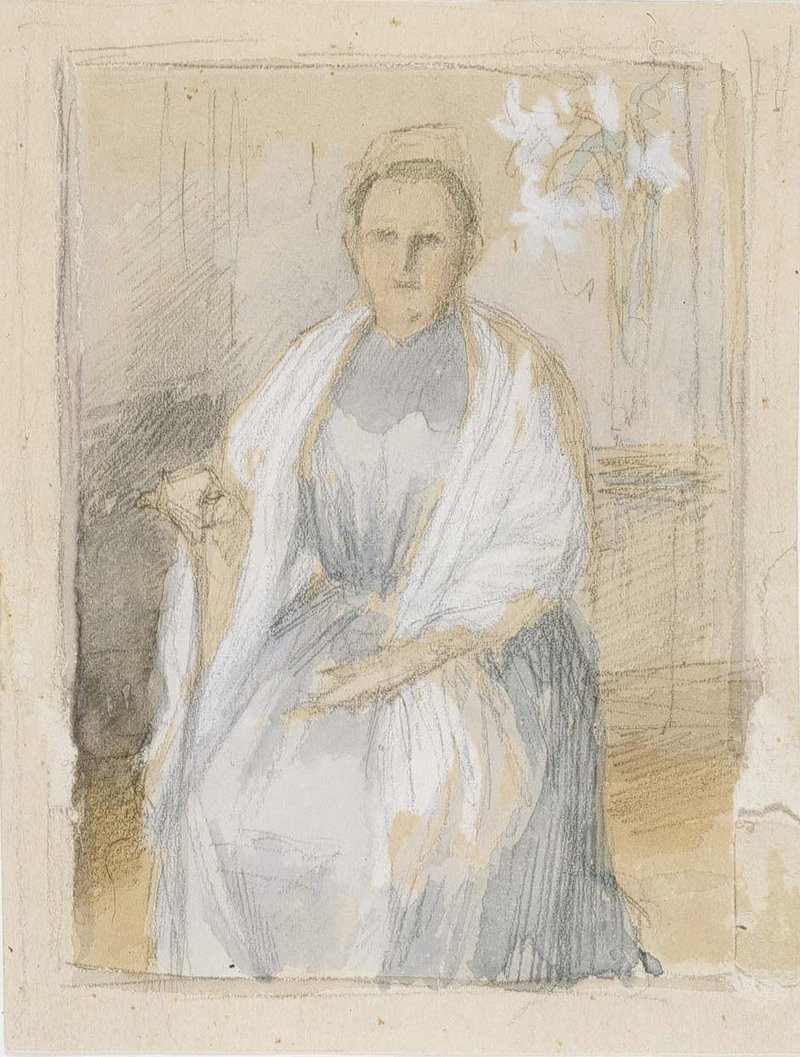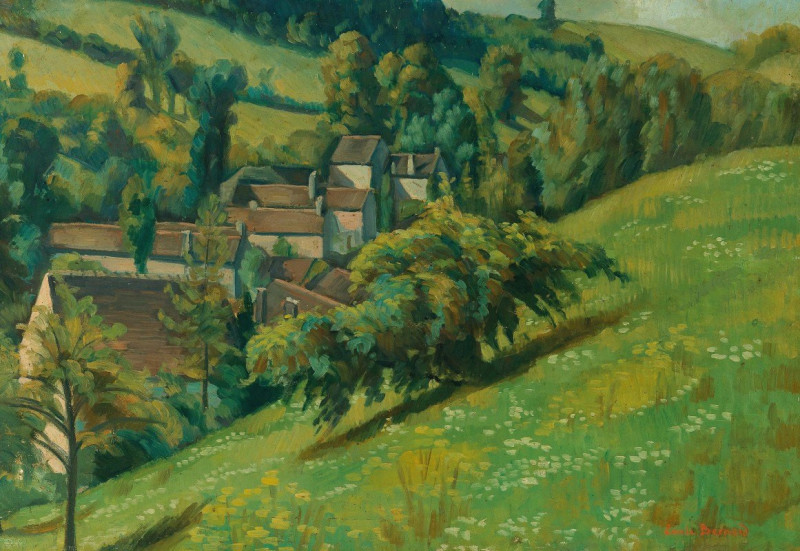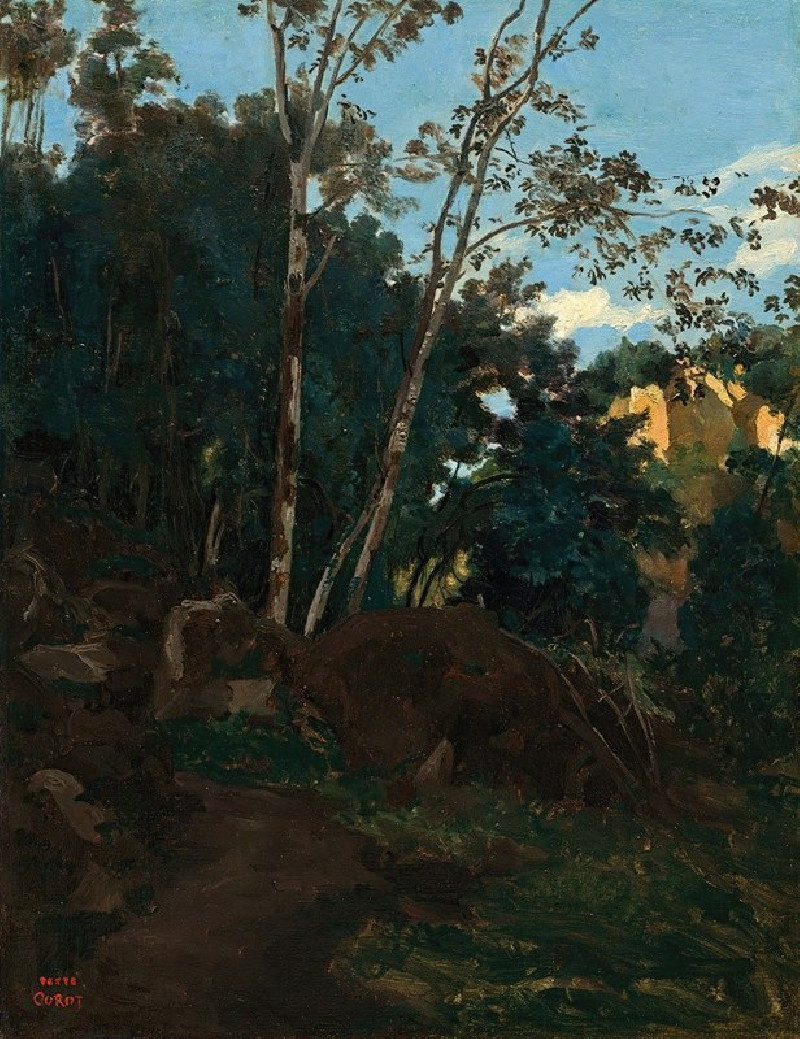Ölberg mit Bahngleisen II (1912)
Technique: Giclée quality print
Recommended by our customers
More about this artwork
A captivating piece by August Macke, "Ölberg mit Bahngleisen II" (1912), showcases the exceptional blend of Expressionism and a unique perspective on natural and constructed environments. This painting captures a serene yet dynamically composed landscape, depicting a mountainous backdrop with houses nestled close by, embodying a tranquil village scene. The convergence of nature and human innovation is evident through the prominent inclusion of railway tracks that sweep through the village, creating a rhythmic flow of lines and shapes that guide the viewer’s eye across the canvas.Macke's use of watercolor adds a delicate and fluid characteristic to the painting, with soft washes of color that suggest movement and change. The earthy and muted tones create a harmonious composition, while brief strokes of darker colors add depth and texture. Figures are sparingly placed within the landscape, their small and somewhat abstract forms contribute to the overall ephemeral and dreamlike quality of the scene."Ölberg mit Bahngleisen II" is not just a traditional landscape; it is an exploration of the intersection between humanity and its environment. The painting invites viewers to contemplate the quiet moments of daily life and the continuous, albeit silent, interactions between the natural world and human creations.
Delivery
Returns
August Macke (3 January 1887 – 26 September 1914) was a German Expressionist painter. He was one of the leading members of the German Expressionist group Der Blaue Reiter (The Blue Rider). He lived during a particularly innovative time for German art: he saw the development of the main German Expressionist movements as well as the arrival of the successive avant-garde movements which were forming in the rest of Europe. Like a true artist of his time, Macke knew how to integrate into his painting the elements of the avant-garde which most interested him.

